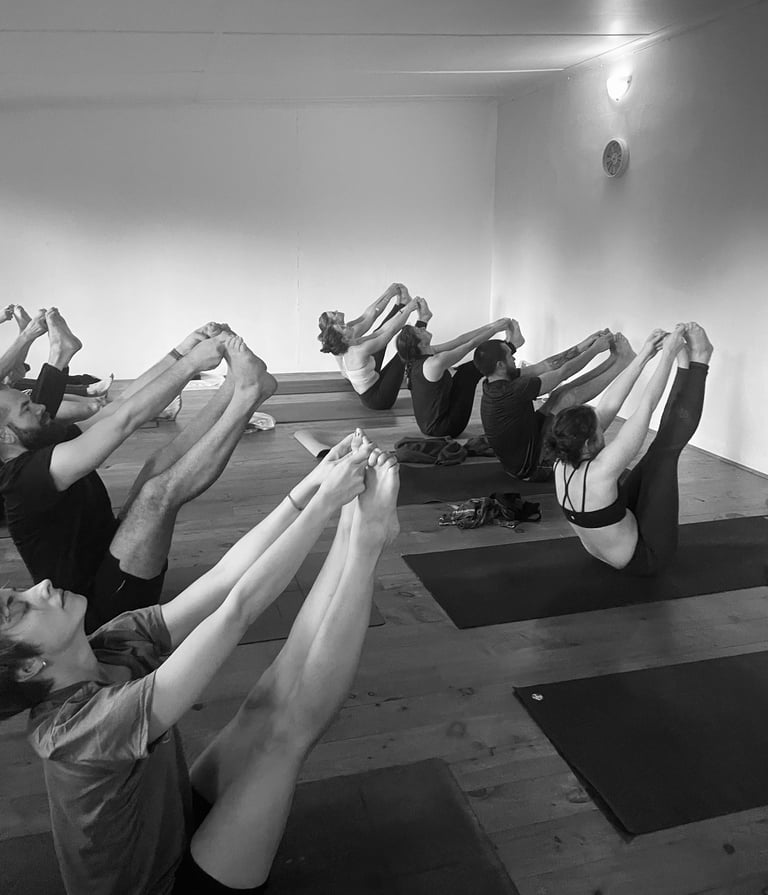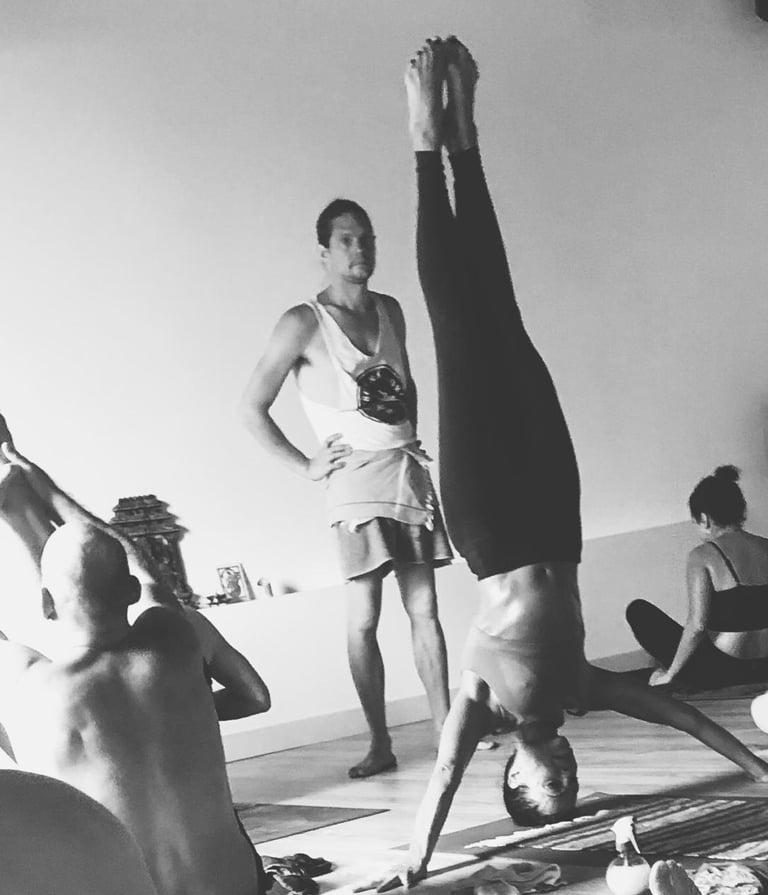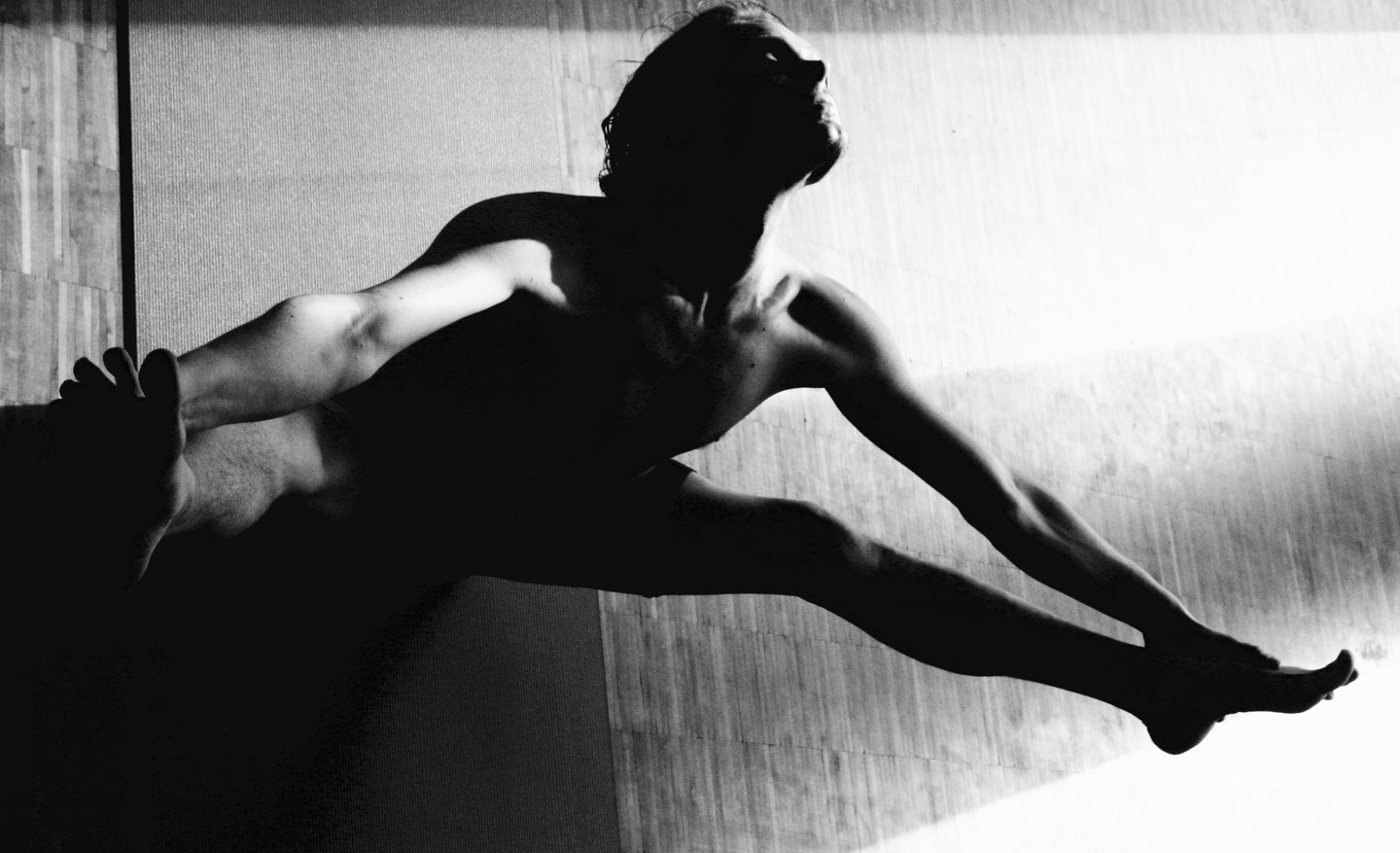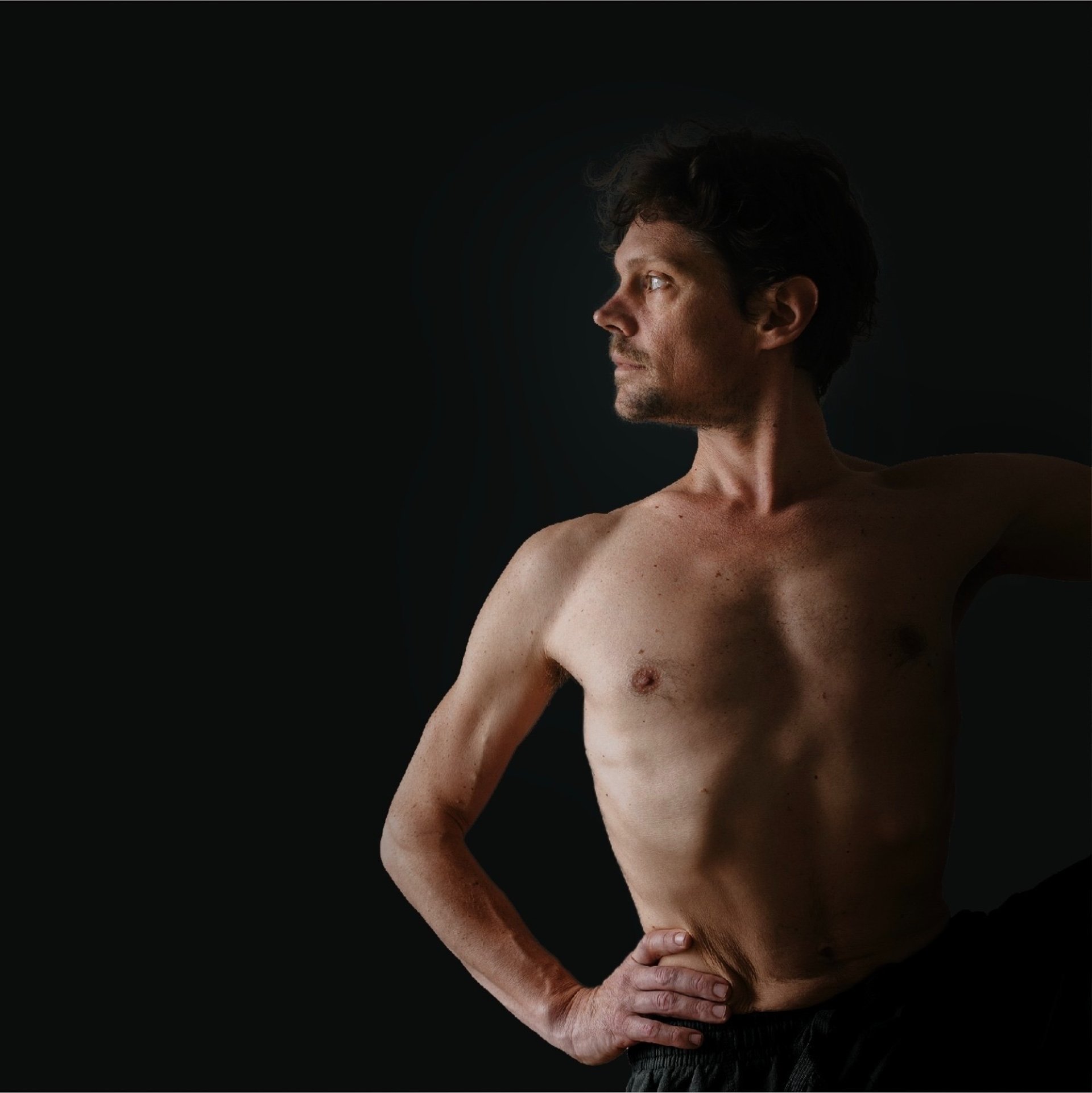
The Practice
What is Mysore Style?
Mysore-style is named after a town in South India where this teaching method originated, and it is the traditional and safest way of learning Ashtanga yoga.
Students receive one-on-one guidance within a group setting and learn to practise a set sequence of postures at their own pace and in a way that is suitable for their abilities and level of experience. Beginners are introduced to the sequence slowly, one posture at a time, to memorise it easily and learn to practice it by themselves. When the student is ready, gradually more postures are added to the sequence.
In a Mysore class, beginners and advancing students all practise together, but everybody is focused on their own personal process. The teacher walks around the room supporting students individually with hands-on assists and sometimes verbal instructions. But for the most part, it is a silent space that encourages introspection and honest self-inquiry where deep inner learning can take place.
The start and finish time of a Mysore class is flexible. This means students may come and leave any time within the allocated practice hours, keeping in mind the amount of time needed to complete their practice. Beginners will usually only need 30-45 minutes; advancing students might practise up to two hours.
What is Ashtanga Yoga?
Ashtanga Yoga Vinyasa can be seen as the origins of what is now understood as vinyasa yoga. Although the understanding and practice of vinyasa has often been misunderstood and has lost its original meaning in the modern pop commercial yoga culture. It is a practice and philosophy focused on physical, psychological and spiritual health and development and was developed by the late Sri K. Patthabi Jois, who received the teaching from his Guru T.K. Krishnamacharya, known as the father of modern postural yoga. Sri K. Pattabhi Jois's grandson R. Sharath Jois, played a big role in sharing this lineage to the world and died in late 2024. Our teachers have been trained by these masters and have spent decades learning and teaching this system of postural yoga
The physical practice consists of a set sequence of postures linked together in a dynamic flow where each movement is synchronised with the flow of the breath. By practising with focused attention on the breath, specific gazing points (drsti) and energetic locks (bandhas), one will develop a greater sense of self-awareness and drop into a deep state of presence. A regular Ashtanga practice builds physical strength and flexibility, regulates the nervous system and develops mental clarity and resilience.
It is a challenging practice that requires commitment, courage and consistency, and at times it will take us to the edge of our comfort zone and ask us to face aspects of ourselves that we’d rather turn away from. But if we keep on coming to the mat with patience, self-compassion and devotion, this practice will, over time, clear the body and mind from blockages, physical tensions and limiting habitual patterns, creating a sense of inner freedom, improving our relationships and waking us up to experience life more fully.
The essence of this practice is embodied learning, and the only way to truly get to know it is through your own experience. If you are open and receptive, it will teach you exactly what it is that you need to learn in each moment. It is a gift that keeps on giving and an adventure for a lifetime.




Led Class
Due to the challenging nature of mastering the various vinyasa (method for entering and exiting each posture using a precise breath count), group guided classes are held on Fridays and on the occasional Sunday, where all vinyasas are counted out loud, and students follow along together accordingly.
Mysore Style
The term Mysore Style was coined by western students who travelled to Mysore, India, to study with the masters of modern yoga, namely TK Krishnamacharya and Shri K Pattabhi Jois, who taught what is called the Vinyasa method of Hatha yoga. The teaching method was a direct transmission from teacher to student, as described above. This became known as the Mysore Style.



Guidelines
Please take off your shoes before entering the room.
Enter the Shala quietly, not to disturb the process of other practitioners.
Turn your phone to flight mode for the duration of the class.
Please always inform the teacher of any injury or medical condition that may affect your practice.
Feel free to say no to receiving physical adjustments at any time. No explanations needed.
Shower before coming to practice and wear fresh, odour-free clothes.
Please do not use any scented soap, lotion or deodorant as this might be offensive to other practitioners.
Bring your own yoga mat and towel and make sure they are always clean.
It is crucial to practice on an empty stomach in order not to put strain on the digestive system. Do not eat for at least two hours and do not drink for at least 15min before practice. Also do not eat or drink anything (including water) during the practice.
Ladies are advised not to do asana during the first three days of menstruation, nor during the first trimester of pregnancy.
During practice, try to remain as silent as possible, out of respect for other practitioners as well as your own internal process.
Resist the urge to compare yourself to others and try to stay fully present with your own experience. Everyone benefits from this practice in different ways, and it is important to approach it with patience and trust. Comparison and competition will only disturb your peace of mind and may even lead to injury.
This practice works on deep and subtle levels of the subconscious mind, and, at times, painful memories and repressed emotions may come to the surface. This is a natural part of the healing process, and it is best not to over-analyse it. However, please always feel welcome to talk to your teacher if you’re experiencing any difficulties or unfamiliar feelings that you don’t know how to work with.